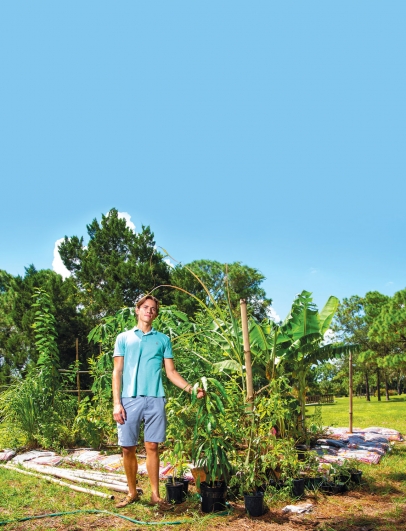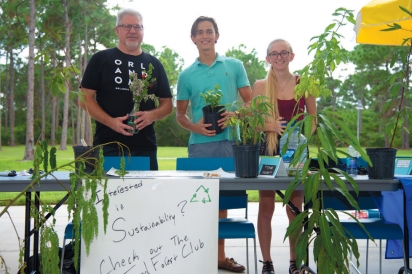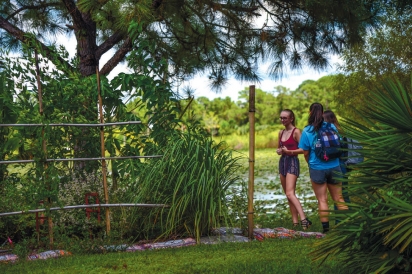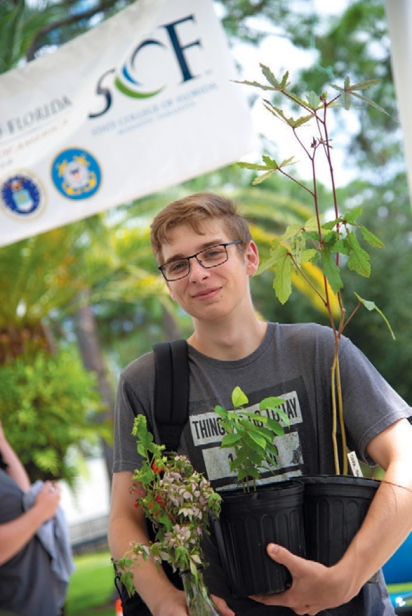Back To Nature
Ever heard of a food forest? If this phrase conjures up magical images of pizza or pasta growing on trees, think again. A food forest is a very real thing, and you can find one on the State College of Florida (SCF) Venice campus.
The idea to create a food forest started with SCF student Joseph Kirshner. After graduating from Sarasota High School, Kirshner considered himself an environmentalist with a keen interest in gardening and growing food. While watching videos on YouTube, he learned about food forests, which mimic an actual forest, except that everything that is grown is edible or medicinal. What grows at the top may fall to the bottom and support whatever is growing there. This includes the trees, bushes, and vines.
“It was my ideal garden,” Kirshner says. In an interesting twist, the Florida Gulf Coast University campus in Fort Myers also has a food forest, he adds. Kirshner approached SCF about starting a food forest at its campus. “My hope was that the edible element would draw people in,” he says. He spoke with environmental Ethics class professor Woody McCree. McCree leads eco-tours, so he was fascinated by the idea of growing edible plants in a controlled environment. The two, along with SCF professor Andrew Swanson, got the green light to start the food forest in a 15- by 15-foot space on the campus fitness trail.
At the SCF food forest, there are different layers of growth, similar to what you find in the real forest. Items include avocadoes, bananas, moringa, beauty berries, and various herbs like basil and mint. “You always want a few things to pull in native bees,” McCree says. At certain times of years, there also will be annuals like tomatoes. Mangos may be part of the mix in the future as well.
Although the forest isn’t ready to make a meal, McCree has encouraged students having spaghetti and meatballs for lunch from the cafeteria to add fresh oregano or basil from the forest to make mealtime more flavorful. McCree also praises Kirshner’s initiative in getting this started.
Eventually, Kirshner wants more student involvement with the food forest. Students could help plant, care for the forest, and take part in clubs or workshops. “Gardening is meaningful. You see life growing,” McCree says. The food forest can help foster a sense of connection on campus and perhaps one day be used regularly by SCF food service, McCree adds.
Eventually, Kirshner plans to earn his associate degree at SCF and then transfer to the University of Florida to study botany or horticulture. After that, he would like to start an aquaponics business.
Students at SCF who would like to get involved with the food forest can call Kirshner at 941-538-1265.









